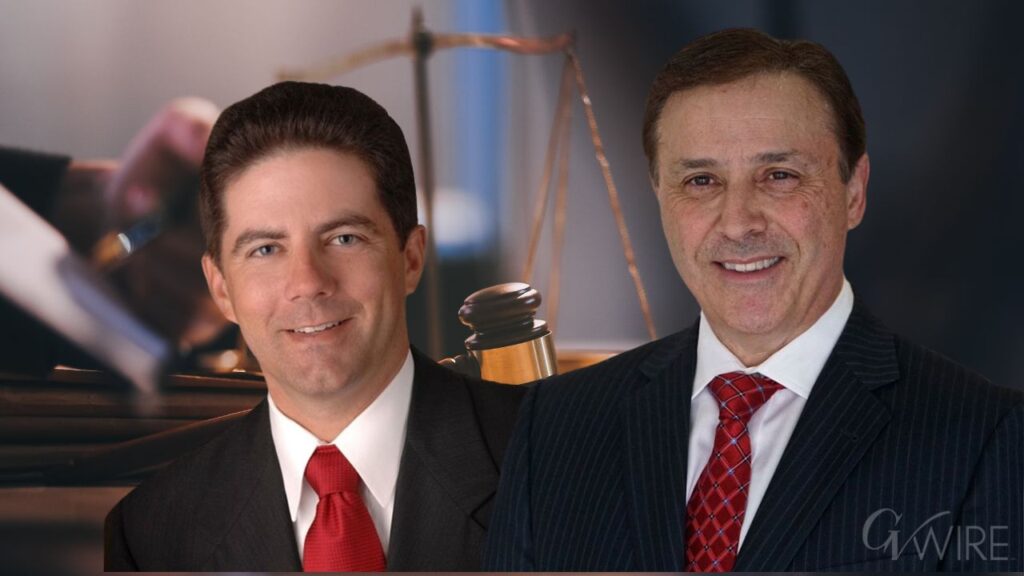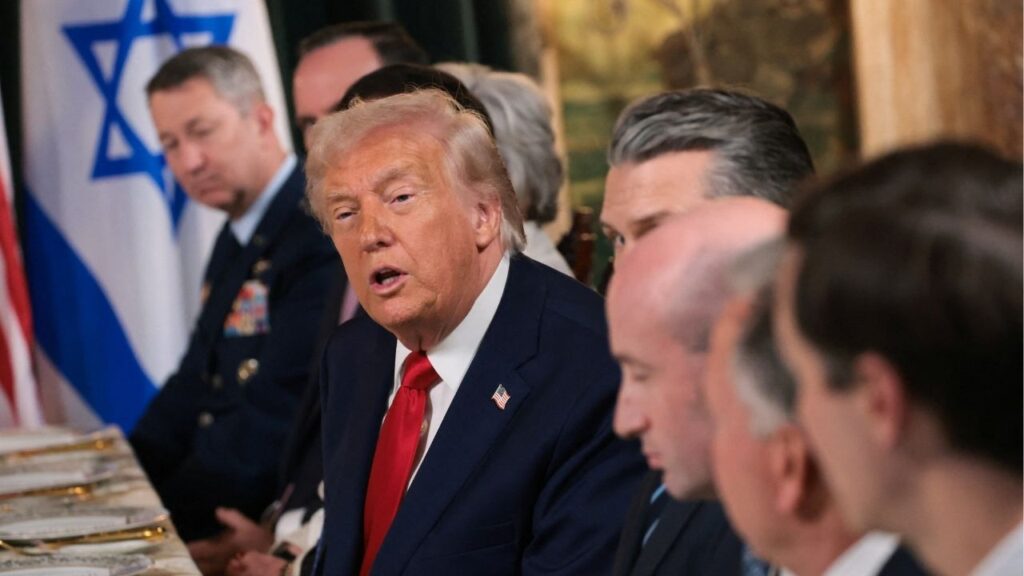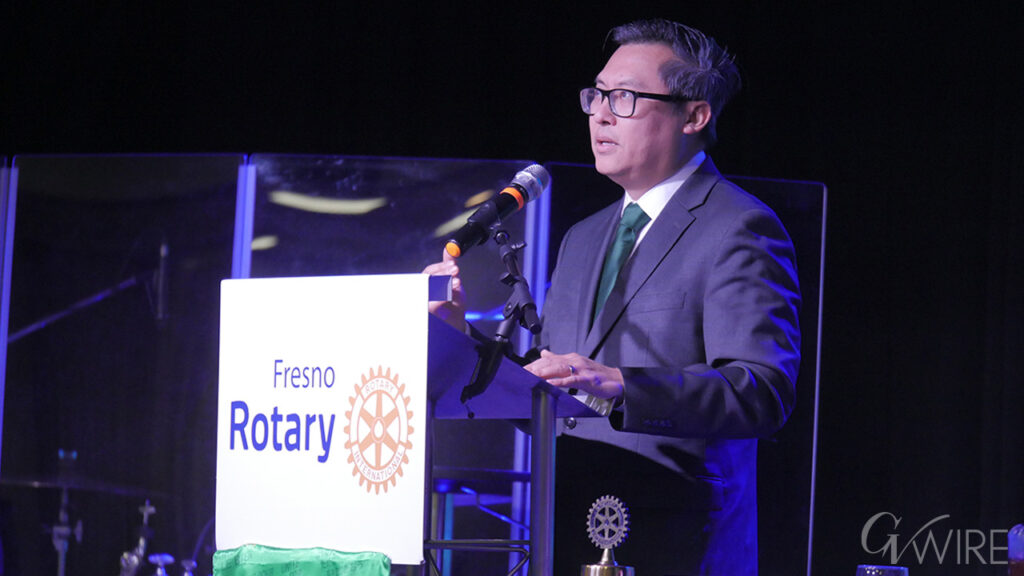Former President Donald Trump at a town hall meeting moderated by Arkansas Governor Sarah Huckabee Sanders, in Flint, Mich., Sept. 17. Whether he is speaking to retirees, corporate executives or tipped workers, Trump has made a habit of promising tax cuts that could cost trillions. (Doug Mills/The New York Times)

- Trump’s tax proposals include eliminating taxes on Social Security benefits and tips, and cutting corporate tax rates.
- He promises to restore the SALT deduction, which would benefit high-tax state residents like those in New York and New Jersey.
- Critics warn Trump's tax plans could cost up to $10 trillion over a decade, worsening the national deficit.
Share
|
Getting your Trinity Audio player ready...
|
WASHINGTON — When it comes to tax policy, former President Donald Trump has appeared in recent weeks to channel Oprah Winfrey, the television legend whose audience giveaways became a cultural sensation.
But instead of free cars, Trump, the Republican presidential candidate, is offering his audiences bespoke tax cuts. For restaurant and hotel employees in Nevada, a swing state, Trump offered “no taxes on tips.” For the retired Americans who vote in great numbers, he said he would end taxes on Social Security benefits. For business executives at the Economic Club of New York, Trump offered a cut in the corporate tax rate to 15%, from 21%, for domestic manufacturers.
And for his fellow New Yorkers, whom Trump addressed at a rally in Long Island on Wednesday, he said he would bring back a prized deduction for state and local taxes, known as SALT, a tax break that he once limited.
“Going to restore SALT,” he said during his rally, adding that the move would “save thousands of dollars for residents of New York, Pennsylvania, New Jersey.”
Related Story: Teamsters Union Declines to Endorse Trump or Harris for President
Trump Promises to Reduce Taxes
Earlier in the night, he promised that “if you vote for me, I’m going to reduce your taxes.”
The plans, so far offered as pithy one-liners without detailed explanations, have proved politically popular, energizing crowds at his rallies and in one instance even prompting his Democratic rival to adopt a version of his idea. They have also scandalized tax and budget experts in Washington, who balk at the mounting cost of Trump’s anti-tax crusade.
“The pattern is, you show up somewhere, you think about what that person wants and you propose it without regard to cost,” said Marc Goldwein, the senior policy director for the Committee for a Responsible Federal Budget, which advocates lower deficits. “I do think this is really troubling.”
Trump has not been shy about the political goals of his tax cut proposals, telling attendees at a rally in Tucson, Arizona, last week that not taxing Social Security benefits would be a “big deal.” He added, “You remember that, seniors, when you go to vote.”
Republicans are trying to hold on to several House seats on Long Island, where Trump spoke Wednesday and where lifting the $10,000 cap on the state and local tax deduction is popular. After reading out a list of House Republicans in attendance at his rally, Trump pointed to that group, including Rep. Anthony D’Esposito of New York, saying: “SALT, Anthony. Remember, fellows, SALT.” D’Esposito stood and gave Trump a thumbs-up.
Related Story: Secret Service Told Trump It Needs to Bolster Security if He Keeps Golfing
Trump Rebrands Tax Agenda
More broadly, Trump has been trying to rebrand his tax agenda, long attacked by Democrats as a giveaway to big companies and the rich, as helping the working class.
“It’s time for the working man and woman to finally catch a break,” Trump said as he discussed his idea to not tax overtime pay.
Trump has waved away concerns about the cost of his proposed tax cuts by pointing to his plans to raise tariffs, arguing that the United States would have “no deficits within a fairly short amount of time.” The Tax Policy Center, a think tank, estimated that a 10% tariff on all imports, as well as higher tariffs on Chinese goods, could raise $2.8 trillion in revenue over 10 years.
But that would still come nowhere near covering the cost of all the tax cuts Trump has proposed during the presidential campaign. His most expensive proposal is to simply extend the tax cuts he signed into law in 2017, many of which expire after next year. Including higher debt service costs, continuing those tax cuts would cost roughly $4.6 trillion over a decade, according to the nonpartisan Congressional Budget Office.
He wants to pile even more tax cuts on top of that, while his running mate, Sen. JD Vance, has floated a dramatic expansion of the child tax credit.
All told, the cost of Trump’s tax cuts could be nearing $10 trillion over 10 years, according to Andrew Lautz, an analyst at the Bipartisan Policy Center. “The numbers are mind-boggling,” he said.
Related Story: Harris Leads Trump by 6 Points Nationally Following Debate, New Poll Finds
Deficit Continues to Grow
The deficit has been growing in recent years, even as the economy has remained strong, alarming some economists. Governments are generally expected to run smaller budget deficits during periods of strong growth than in downturns, when the economy often needs juicing. The cost of financing America’s debt has soared as interest rates have remained elevated, and rating agencies have said they are worried about the ability of the U.S. government to pay back its debts.
That dire fiscal outlook will weigh on lawmakers next year when they consider whether to extend the 2017 tax cuts. They will also have to face a decision about whether to raise the nation’s debt limit, which caps how much money the United States is authorized to borrow.
Republicans have long embraced tax cuts even when they are projected to widen the deficit, hoping to jump start economic growth. Some of Trump’s allies view his ideas as a way to encourage more work and therefore boost the economy. But Erica York — an analyst at the Tax Foundation, which generally favors lower tax rates — said that Trump’s current collection of ideas, targeted at relatively small groups of Americans, would not generate broad-based economic growth.
“There is no policy rationale driving this thing, this is political considerations taking the wheel,” York said.
York and other economists generally favor a tax system that does not tax Americans differently based on differences in where they live, how they earn money, or whether they rent or own a home. By that measure, Trump’s 2017 tax law helped clean up the tax code, narrowing deductions for state and local taxes, as well as mortgage interest, while vastly expanding the standard deduction.
Trump’s suite of campaign tax proposals would take the tax code back in the other direction, slicing open new carve outs for workers based on whether they earn tips or overtime pay — and for Americans who live in high-tax states like New York and New Jersey.
Of course, Trump’s tax ideas would need to pass Congress to become law. And even if Republicans end up controlling both the House and Senate next year, Trump may not find them willing to go along with all of his ideas. Sen. Michael D. Crapo, R-Idaho, would become the chair of the Senate Finance Committee if Republicans win the chamber in November. Asked if he was concerned about the cost of Trump’s ideas, he demurred.
“I get that question a lot on every single proposal that he mentions, and the answer is, we’re dealing with a multitrillion-dollar tax code issue next year, and every single provision of it raises that question,” he said. “I’ll decide what my position is on it when we see what the whole picture is next year.”
–
This article originally appeared in The New York Times.
By Andrew Duehren and Michael Gold/Doug Mills
c. 2024 The New York Times Company



















